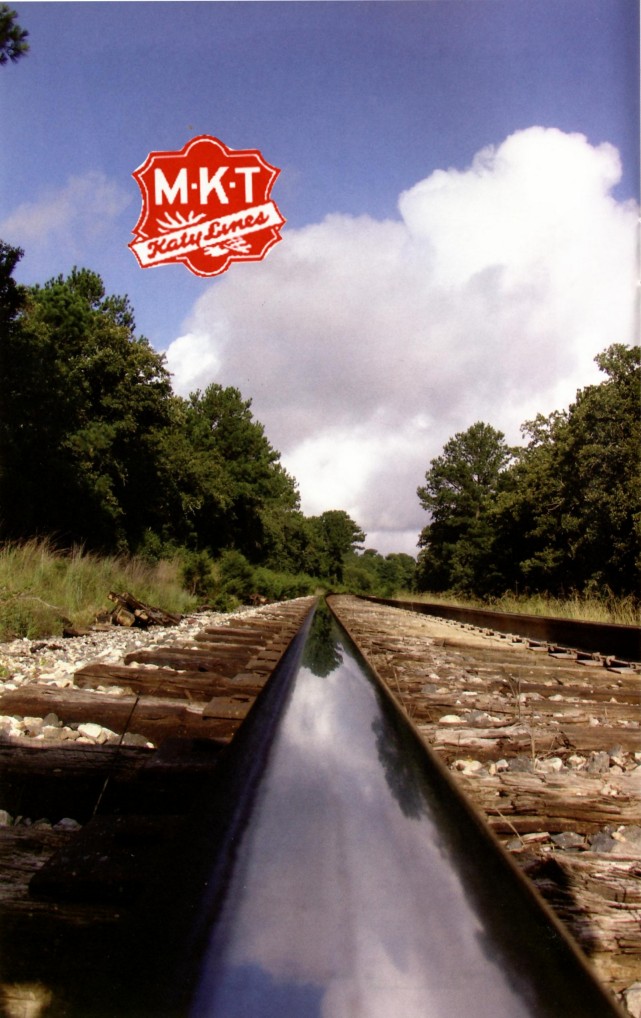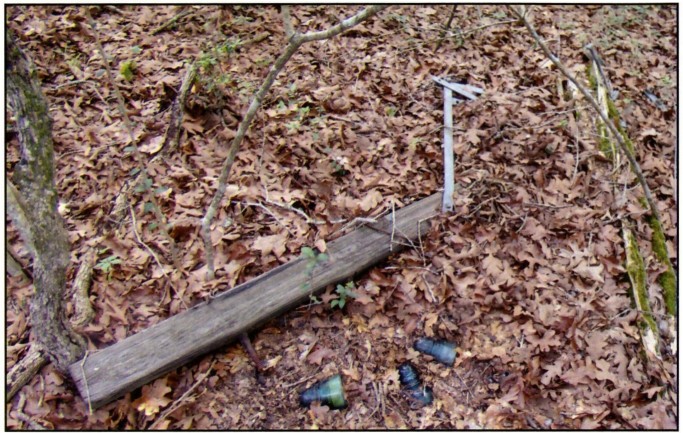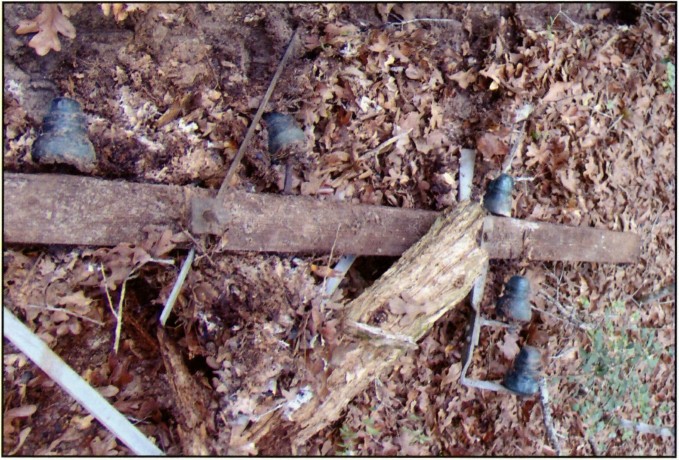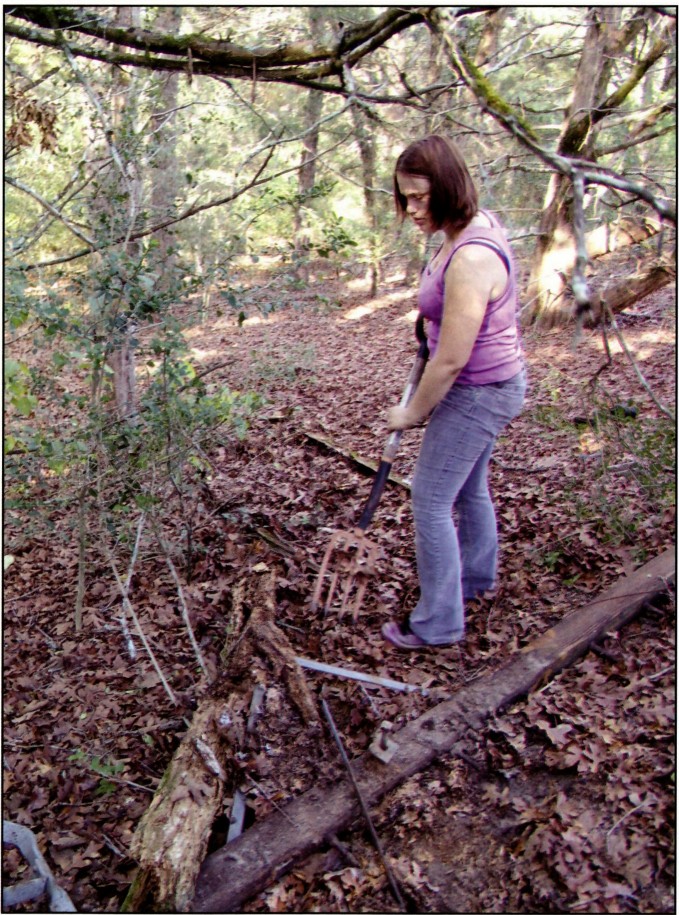Insulator Hunting on the Katy Line
By Howard Banks
Reprinted from "Crown Jewels of the Wire", September 2006, page 26
She dates back almost to the Civil War. In concept at least. Rails didn't get
placed, and locomotives didn't roll into Austin, Texas for another 20 years.
I'm talking about a railroad that became known as the "Katy" line.
Officially, the railroad is named the Missouri, Kansas & Texas Railway
Company. That's M-K-T for short. Say those letters aloud. Now put the emphasis
on "K - T". As in "KAY -TEE".
Before July's National Show in Austin, I was unfamiliar with the term
"Katy". Now I've walked her tracks looking for insulators. And even
found some. Nine to be exact.
When we heard the National Insulator Association's annual show was going to
be in Texas this year, Linda and I saw an opportunity to visit her cousin and
her cousin's daughter. As we approached their home southeast of Austin near Red
Rock, the first thing I noticed were railroad tracks just a few hundred feet
away. Surrounded by dense woods. No neighbors. "Wow!", I said to
myself. "I'm going to have to take a walk on those tracks before this
week's out."
After the National Show, Linda and I spent the first three days working on
the August issue of Crown Jewels. On Thursday, we spent the afternoon with
collector Jack Roach and his wife, Judy. Back in Red Rock that evening, we
decided to take a walk on the railroad as daytime gave way to dusk. Barely
started, we had to get off the tracks for an approaching train. In fine Texas
style, the engineer saluted us with a whistle and a wave as the train rolled by.
(When you visit Texas, one of the first things you notice is that manners are
still in style there.)
Back on the tracks, I began looking for signs of a pole line. So far I hadn't
even seen any pole stumps. But soon I spotted rusty wire hanging in the
vegetation south of the tracks. Following that lead as best I could as the
fading light, I tracked the wire to a standing pole. The pole was so overgrown
with trees it was barely visible from the tracks. And while there were no
insulators on the pole, I determined to return in the morning.

Friday was hot and humid. Even for Austinites. The temperature at 8:00 in the
morning was pushing 80. I sure the humidity wasn't far behind. The abandoned
poles are overgrown with trees and brush as nature encroaches the railroad.
Insulator hunting isn't for the timid. To have a chance of finding anything I
needed to leave the right of way and crawl into the thickets of brush and trees.
Literally crawl, at times.
The poles bore two eight pin crossarms. A transposition bracket was mounted
on one crossarm in the exact same position on each pole. That would indicate two
lines were for telephone communications. The rest were probably telegraph lines.
One pole bore a 1928 date nail. Another had scars from once having held side
pegs instead of cross arms. Still no insulators in sight. Then in the brush
beneath a pole, a glint of blue glass. Hemingray blue, to be precise. Instant
recognition. A Hemingray 42 (CD 154). Undamaged.
The next pole was missing. It had been cut down. But wait. The pole top, with
one cross arm still attached; lay in wait. What's that? Three insulators visible
in the duff.

After photographing and collecting them, I turned the cross arm over. Sure
enough. There were the remaining insulators, still in place on their pins.

There was nothing of value. All total that morning, I found four CD 145 H.G.
Co. beehives; three CD 152 Hemingray 40's and two CD 154's. But they were like
lost treasures, still out in the wild waiting to be found.
I gathered up one of each CD style to give to our cousin's daughter, 17 year
old Marissa Chapman. But her enthusiasm over finding insulators was so great, we
went back out the next morning. Besides picking up the insulators I left behind,
she found her first: a CD 155 Hemingray # 45.

Were older, better insulators ever used on those lines? Possibly. The
Missouri - Kansas - Texas Railroad began as the Union Pacific Railway, Southern
Branch, in 1865. It was unrelated to the Union Pacific Railroad that became
famous for its involvement in the transcontinental crossing. The Katy was the
first railroad to enter Texas from the North when line construction crossed into
the Lone Star State in 1872.
The branch of the Katy I walked connects Houston to San Antonio. It was
completed through Red Rock in 1891. The community remembers, as the town was
moved from its original location about one mile to the newly constructed tracks.
The Katy opened up Central Texas, allowing the cotton farmers around Red Rock
and hundreds of similar towns an affordable method of getting their crops to
market. Commerce valued at over $4-million traveled down her tracks in 1895
alone. Today, after being sold to the modern Union Pacific two decades ago, she
remains active. We witnessed a half-dozen trains a day pass by during our brief
stay.
References:
A Short History of Red Rock, Texas; by John Pilot, 1999.
Katy Railroad Historical Society, Sedalia, Mo 65302
www.answers.com/topic/m-k-t railroad
www.bastroptexas.net/history/red-rock.html
www.kansasheritage.org/research/rr/katy.html
www.katyrailroad.org/steam.htm
Photographs by Howard Banks
| 